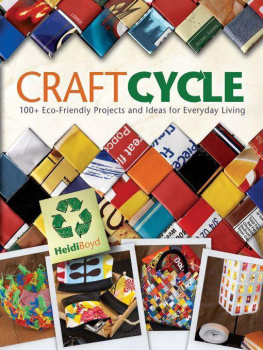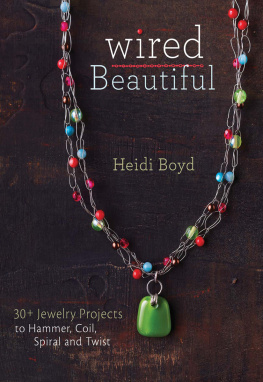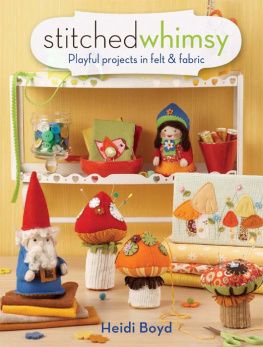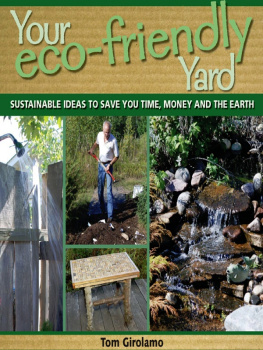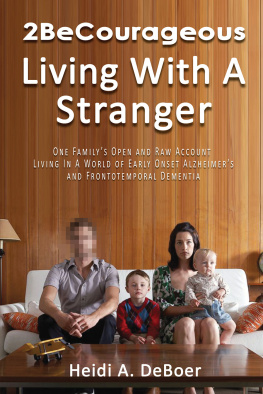Table of Contents
Craftcycle: 100+ Eco-Friendly Projects and Ideas for Everyday Living. Copyright 2009 by Heidi Boyd. Manufactured in China. All rights reserved. The patterns and drawings in this book are for the personal use of the reader. By permission of the author and publisher, they may be either hand-traced or photocopied to make single copies, but under no circumstances may they be resold or republished. No other part of this book may be reproduced in anyform or by any electronic or mechanical means, including information storage and retrieval systems, without permission in writing from the publisher, except by a reviewer who may quote brief passages in a review. Published by North Light Books, an imprint of F+W Media, Inc., 4700 East Galbraith Road, Cincinnati, Ohio, 45236. (800) 289-0963. First Edition.
13 12 11 10 09 5 4 3 2 1
Distributed in Canada by Fraser Direct
100 Armstrong Avenue
Georgetown, ON, Canada L7G 5S4
Tel: (905) 877-4411
Distributed in the U.K. and Europe by David & Charles
Brunel House, Newton Abbot, Devon, TQ12 4PU, England
Tel: (+44) 1626 323200, Fax: (+44) 1626 323319
E-mail: postmaster@davidandcharles.co.uk
Distributed in Australia by Capricorn Link
P.O. Box 704, S. Windsor NSW, 2756 Australia
Tel: (02) 4577-3555
Library of Congress Cataloging-in-Publication Data
Boyd, Heidi Craftcycle : 100+ eco-friendly projects and ideas for everyday living / by Heidi Boyd. -1 st ed. p. cm.
Includes index.
ISBN-13: 978-1-60061-304-3 (pbk.: alk. paper) ISBN-10: 1-60061-304-7 (pbk. : alk. paper)
1. Handicraft. 2. Recycling (Waste, etc.) I. Title.
TT157.B715 2009
745.5-dc22
2009008575
THE PAGES OF THIS BOOK ARE PRINTED ON 60% Post-Consumer Recycled Paper.
Development Editor: Jessica Gordon
Content Editor: Jolie Lamping Roth
Production Editor: Vanessa Lyman
Designer: Geoff Raker
Production Coordinator: Greg Nock
Photographer: Ric Deliantoni
Photo Stylist: Nora Martini
Step-By-Step Illustrations: Heidi Boyd
Building Diagrams: Jon Boyd
Metric Conversion Chart
Cooking Conversion Chart
Temperature Conversion Chart
NOTE: The metric units and Celsius degrees given are estimates not exact measurements.
About the Author
Heidi Boyd is the author of ten books with North Light Books, most notably the Simply Beautiful series. She crafts at the dining table, where she can keep an eye on the family and dash out the door for the next carpool. Her goal is to make sophisticated design approachable and easy for all. She has a fine arts degree and got her start in professional crafting as a contributor to Better Homes and Gardens books and magazines. Her husband, Jon Boyd, has been helping behind the scenes with many book projects. He is a LEED-accredited, licensed architect with twenty years of commercial and residential design experience. This is the first time hes contributed designs, drawings and projects of his own. Together, Heidi and Jon and their three children actively enjoy the natural beauty of their midcoast Maine home.
Check out Heidis blog on www.mycraftivity.com.
Dedication
This book is dedicated with love to our children, Jasper, Elliot and Celia. We wishyou a beautiful green world.
Acknowledgments
A project this size requires the efforts and enthusiasm of many. Im fortunate to be surrounded by talented and generous friends. I owe a debt of gratitude to my good friend Hannah Beattie, who lent her sewing expertise to the book, and her husband, Bart, for the amazing potting bench project. A big thank-you to knitting designer Chesley Flotten for the fabulous afghan, Catherine Matthews Scanlon for her ingenious tin can pincushions, Rose Nelsons garden digs and camera talents, Tony DiPietro for graciously allowing us to photograph some of his extraordinary birdhouses, and my wonderful neighbor Claudia Brzoza, who generously shared both her treasure trove of recycled goods and words of encouragement.
Intro
C reativity and being green go hand in hand. Resourceful artists have been reusing available materials to make stunning works of art since before recorded history. Museums are filled with examples of useful and beautiful handicrafts made with cast-offs. Native Americans made stunning patterns with natural plant dyes on buffalo hide to create beautiful, functional bags they called parfleche. Gorgeous early American quilts were elaborately pieced with clothing scraps, and some even reveal stories of the Underground Railroad. In our modern society, were programmed to go to the stores and buy what we need. Most of us would never think of stitching our own suitcase or bed covers. Our economy is almost completely based on consumerism. The majority of our waste comes from the packaging and disposal of these goods.
The first step of craft cycle is to get you to look at what we dispose of with heightened awareness. You might be surprised by the wealth of creative materials that is within your reach. The common by-products of our consumerism lifestyle such as plastic bags, food packaging, cardboard boxes, worn clothing, plastic bottles, and even bike inner tubes are excellent crafting materials. Only, these highly manufactured items often require more than a simple dot of glue or stitch to assemble them into new creations. I found that with a few simple modifications and handy tips, many of the classic crafting techniques such as cutting, folding, ironing, sewing, knitting and crocheting also work well with most of these nontraditional materials.
A huge amount of satisfaction comes from making something beautiful and functional out of what many consider waste. Who would have known that potato chip bags could fold into a neat little purse, orthat a stack of well-worn T-shirts would hook into an attractive shaggy rug? Whenever I shared a work-in-progress for this book, the enthusiasm was infectious. I found that craft cycling also helps build neighborhoods and communities. Once people heard what I was doing, teachers placed chip bags in my daughters preschool cubby, and neighbors dropped plastic lids in my mailbox.

